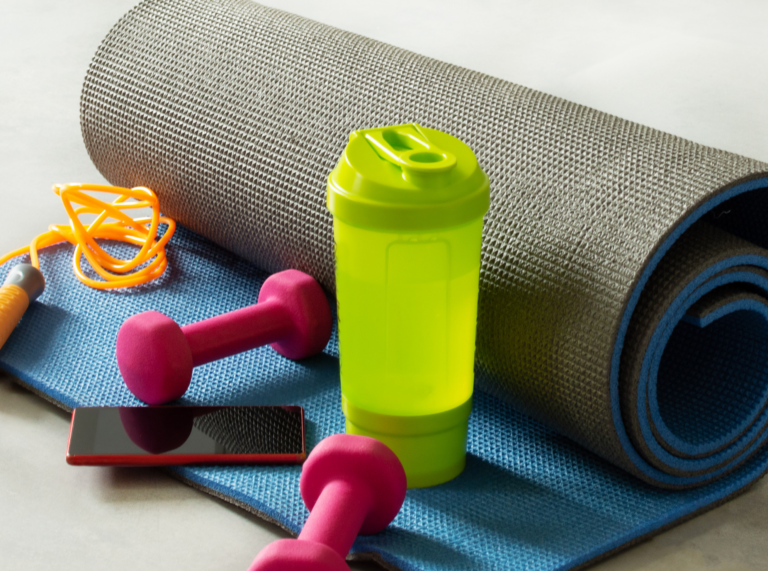
In the fitness industry, your members’ results shouldn’t be the only thing that turns people’s heads. Building a solid fitness public relations strategy will generate a buzz that keeps your members pumped about their fitness journey as you grow your community and build lasting customer relationships.
By building relationships with journalists and media contacts, teaming up with influencers, and hosting community-centered events, you can boost your gym’s outside reputation while helping its members achieve their fitness goals inside.
Remember, having a strong public relations strategy for your fitness brand isn’t just about getting your name out into the world; it’s about creating a thriving community so your brand can cultivate long-term success in a competitive market.
What is Fitness Public Relations?
Fitness public relations is all about building a positive image through strategic communication. A solid fitness PR campaign should focus on building your fitness brand’s visibility and keeping your members engaged as you nurture and grow a loyal customer base who feel connected to your brand and its offerings.
Key Elements of a Successful Fitness Public Relations Strategy
Before you can pump up your brand’s reputation, you should familiarize yourself with the key elements that make up a successful fitness public relations strategy.
Getting to know your audience, honing in on your messaging, leveraging appropriate media channels, and nurturing relationships with journalists will set you up for success as you create a PR strategy that matches your fitness brand’s values.
Understanding Your Audience
Like any strong PR strategy, understanding your target audience is one of the most crucial steps to take before drafting any other elements of your fitness PR campaign. Knowing the demographics of those who are sweating with your fitness brand, such as age, gender, and fitness goals, will help you decide what messaging is best for your audience.
Think about it: if you appeal to a younger audience, you’ll want to focus on messaging for social media campaigns. On the other hand, if your fitness brand appeals to an older audience, you’ll want to focus on traditional messaging, such as newsletters and radio spots.
Look at your current membership data and analyze their preferences and needs. Before moving on to the next steps, this will help you pinpoint who your target audience is.
Crafting Your Message
Once you have your target audience in mind, shift your focus to creating authentic, on-brand messaging for your fitness brand. Take some time to share the story behind your brand and let people know who you are and what you value. Whether you share these messages through blog posts, social media messaging, or video content, your messaging should focus on sharing your story with your audience.
Use storytelling to highlight your unique offerings, customer success stories, and the community your fitness brand attracts. Authenticity resonates, so be genuine and consistent in your messaging to build trust within your audience.
Leveraging Media Channels
In the vast internet landscape, it’s important to figure out where your core audience spends their time online so you can focus on leveraging the appropriate media channels. Use app-specific analytics tools to track when your customers are most active so you can match your efforts with their online habits.
It’s also important to weigh the pros and cons of traditional media vs. digital media. Traditional media like blogs and industry publications are great for building your brand’s reputation. However, in the age of modern PR, social media is essential for boosting visibility. As you build relationships with fitness influencers, create shareable high-value content, and use relevant hashtags to expand your reach, social media becomes an indispensable part of your PR strategy.
Building Relationships with Media
While marketing efforts often focus on building relationships with customers, it is important to focus on building relationships with media contacts within PR. To connect your brand with the media, reach out to journalists and influencers in the fitness industry with personalized pitches that communicate your offerings and your personal expertise. Strengthen these relationships by providing relevant content, responding promptly to follow-up questions, engaging with their work, and expressing appreciation for their work.
Get to know influencers within your market and study the stories that fitness journalists cover. Identify gaps in their needs and interact with them on social media to stay at the top of their minds. If you’re struggling to find journalists and influencers to connect with, our network Qwoted can connect you with media actively working on fitness-related stories.
Public Relations Strategies for Gyms
Now, we’re going to dive into specific PR tactics tailored to fitness brands. These strategies will help your brand boost visibility and build a strong presence within your community.
Hosting Events and Sponsorships
Planning one-of-a-kind events based on your gym’s offerings is a great way to attract new members to your community. If your gym is newer, host an open house to show people what it has to offer. If you have an established gym, organize a fitness challenge or fundraiser to strengthen your existing community and introduce potential new members to it.
Another great way to connect with your community is by sponsoring local events that align with your brand’s values. When you show people what matters most to your gym’s mission, you’ll attract like-minded clients and build robust community ties.
Utilizing Influencer Marketing
If you want to get your gym in front of new eyes, influencer marketing is an essential tool for your PR strategy. Influencers have spent time building strong relationships with their digital audiences, and partnering with influencers who share your values can help you tap into that pre-established trust. Think of it like a good friend recommending their favorite spot—when an influencer speaks authentically about your gym, it can do wonders to get your business in front of the right audience and earn their trust.
Find influencers whose audience matches your target demographic to make the most of influencer marketing. As you choose influencers that align with your values, always track the success of your campaigns by measuring engagement rates, new membership sign-ups, and social media mentions. If you’re not seeing the desired results, don’t hesitate to adjust your strategy and connect with new influencers.
Community Engagement and Partnerships
People want more than just a gym—they want a place where they feel connected to a larger community with similar goals. Fitness is not an isolated journey, and members love celebrating their successes alongside others.
An excellent way for your gym to create a greater sense of community is through partnerships with local businesses. Those on a journey to achieve health and wellness goals often support other businesses that can help them along that journey. In your gym, make a board to connect your members with massage therapists, local juice bars, dance lessons for their kids, and other businesses nearby.
When you do this for other businesses, they will return the favor by holding your business cards in their shops and recommending your gym to customers looking to support other local businesses. Rising tides lift all ships, and creating community-focused campaigns will help your local economy thrive.
Measuring the Success of Your PR Efforts
Now that you understand the key elements of a successful PR campaign, you must know how to measure the success of your fitness PR efforts.
Setting goals, establishing key performance indicators (KPIs), and utilizing relevant tools to track your metrics will help your brand make data-driven decisions that help you create an effective fitness PR campaign.
Setting Goals and KPIs
Key performance indicators (KPIs) are metrics that help you measure the success of your campaigns. Before identifying KPIs, it’s important to set measurable PR goals. For example, a goal like “I want to improve my gym’s public image” is a little too vague and makes it challenging to identify KPIs that track measurable results. A better goal would be, “I want to increase positive social media mentions by 20% in the next six months.” This goal is specific, measurable, attainable, relevant, and time-bound (SMART) and clearly indicates which KPIs you should track.
For this specific goal, relevant KPIs would include the number of positive media mentions, the reach and impressions of each mention to gauge audience size, and the referral traffic to your brand’s website from social media sources to see if positive mentions drive new visitors.
Tools and Metrics for Tracking PR Success
Tracking the success of your fitness PR strategy isn’t so daunting when you have the right tools at your disposal. Start by familiarizing yourself with tools like Google Analytics to track website traffic and see if your PR campaign attracts new visitors to your brand’s site. For goals around social media engagement, use each platform’s analytics features to track the performance of influencer campaigns. Consider using customer relationship management (CRM) platforms to monitor your metrics across various platforms.
Keep your finger on the pulse of your metrics and analyze them regularly to see if your campaign is giving you your desired results. If you struggle to see the desired results, let the data drive the necessary changes. For example, if you saw a spike in social media mentions after hosting a specific event, consider hosting similar events more frequently. By leveraging these insights, you can better connect with your audience and achieve your business goals.
Health and Fitness Public Relations Examples
Embarking on a journey into health and fitness public relations may seem daunting at first, but numerous successful campaigns showcase the power of effective PR strategies for fitness brands. These campaigns often share core elements that contribute to their overall success. Take a look at these examples and pay attention to how storytelling, partnerships, and community involvement play pivotal roles in fitness PR campaigns.
Weight Watchers
Weight Watchers created a PR campaign called WW Good, which focused on providing health support to underserved communities. By partnering with other industry leaders like Wholesome Wave and WE, Weight Watchers was able to engage a larger community while also making a social impact that speaks to its company values.
Gold’s Gym
Gold’s Gym’s “Know Your Own Strength” campaign encouraged their community to broaden their definition of strength beyond physical muscle. This campaign urged people of all ages and backgrounds to pursue personal goals such as overcoming daily challenges or improving their overall well-being. This campaign’s inclusive messaging across multiple communication channels helped a large audience feel empowered and inspired to pursue growth and wellness beyond traditional fitness goals.
Nike Run Club
The Nike Run Club (NRC) Social Community Campaign was initially established to promote a new store opening but has instead created a thriving running community. NRC found exponential growth by starting small and exploring community partnerships alongside strategic social media campaigns.
Conclusion
We hope this article has provided you with the necessary resources to create a successful fitness public relations campaign for your brand. By leveraging local media, connecting with relevant influencers, and fostering community-centered partnerships, your fitness brand can build a lasting presence within your community.
If you’re looking for an extra boost as you create your fitness PR campaign, contact Qwoted today. We’ll connect you with journalists and influencers who can help get you in front of the right audience in no time.


